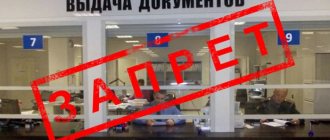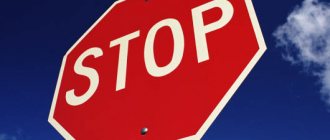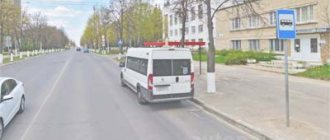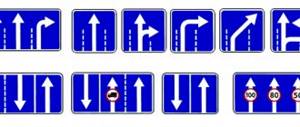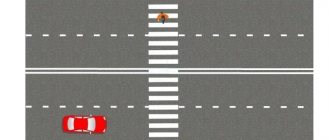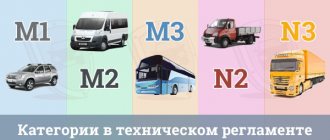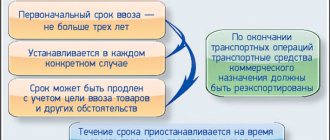What prohibitions and restrictions may apply to vehicles?
It could be:
- prohibition or restrictions on registration activities;
- prohibition from undergoing technical inspection:
Such a punitive measure was often used several years ago, because car owners have to undergo maintenance much more often than register a car, which means that it was possible to force the debtor to pay the bills much faster. However, the ban on undergoing maintenance deprived the car owner of the right to purchase an MTPL policy. Car owners filed lawsuits en masse about the illegality of the actions of bailiffs and won the cases. This forced FSSP employees to practically abandon the use of this measure.
- ban on disposal.
The most common punitive measures today are a ban or restriction of state registration.
September 10, 2021
This article will help you understand several life issues:
- One day you decide to sell your car. They put it up for sale. A man arrived, he liked your car, and you went to the MREO to re-register, and then... it turned out that you couldn’t re-register it, since a ban on registration actions had been imposed, the minimum fine was 500 rubles. Inconveniences immediately arise: a deal fell through, the purchase of a new car was delayed, etc.
- You chose a car on the secondary market, purchased it, went to the MREO to re-register it, and then... see the development of events in point 1. It is much better when, before purchasing, you checked the car in advance on the traffic police website and saw a ban on registration actions.
The next question is, why was it imposed? This could be for various reasons:
- Trivial speeding by 10 km/h. A fine of 500 rubles was issued, the owner of the car did not pay it with the logic “it will burn out after some time.” The bailiffs drew attention to the non-payment of the fine, initiated enforcement proceedings and, by court decision, imposed a ban on registration actions. This is the smallest problem that can be easily solved by paying a fine.
- Another case. This could be an unpaid loan, alimony debts, etc. Here the price of the issue will be much higher: both 30,000 rubles and an amount of several million. Here the issue is not so easy to resolve.
Therefore, if on the traffic police website you see a ban on registration actions, the first thing you should do is go to the website www.fssprus.ru and check the owner. This way, you can figure out why the court decided to ban.
As soon as you visit the website of the Federal Bailiff Service, you are asked to enter your full name and select the region of registration of the owner of the car. Next, click “Find”, you will be asked to enter the code from the picture (anti-bot check).
After entering the text from the image, click “Submit”, the following page will open, on which you can see the following information:
- Debtor (individual: full name, date and place of birth; legal entity: name, legal address) . We check that the data matches the owner of the car, in particular, the date of birth.
- Enforcement proceedings (number, date of initiation).
- Details of the executive document (type, date of adoption, number, name of the body that issued the executive document). Here we see the order number, its date and the court district in which the decision to ban registration actions was made.
- Date, reason for the end or termination of the individual entrepreneur (article, part, point of basis).
- Subject of execution, amount of outstanding debt. The information that is important for you is indicated here: the type of debt and its amount. In our example, the amount is not indicated; this is extremely rare. Unfortunately, at the time of writing, it was not possible to find an example from another production. In another case, there may be information: “Fine 1500 rubles. with the resolution number”, “Loan, non-payment, 300,000 rubles.” and so on.
- Bailiffs Department (name, address). Description of the bailiff department that conducted the proceedings.
- Bailiff. The name of the bailiff and his telephone numbers are indicated here. This is very important information; when solving a problem, you need to contact this bailiff.
Now you are armed with knowledge, and the ban on registration actions will not scare you at all!
We hope that our next article will be useful to you. We sincerely wish you not to encounter such problems. " Back
Who can restrict or ban state registration and for what?
The list of authorities is presented in the Order of the Ministry of Internal Affairs “On the procedure for registering vehicles” (N1001 dated November 24, 2008). Among other things, it says that a ban or restriction may be imposed:
- by a court order (for non-payment of taxes, late payment of traffic police fines, debts to utility or credit organizations, as well as during the division of property);
- investigative authorities (if the car is wanted);
- Traffic police (if external discrepancies are detected in the car with the characteristics specified in the technical passport);
- social protection authorities;
- customs representatives (in case of violations of import rules or indication of false information about the vehicle);
- other bodies vested with the necessary powers.
Peculiarities of imposing a ban on car registration by bailiffs
The main difference in the process of imposing a ban on car registration by bailiffs in 2021 is the fact that there may be several bans. And each of them must be removed separately in the order of repayment of obligations by the debtor. That is, if the bailiff service has imposed 3 bans on the registration of a vehicle in connection with three different claims, then they must be removed as these claims are satisfied. If the debtor has eliminated 2 of the 3 obligations, then the ban will not be completely lifted until the last obligation is repaid. And only in this case the owner gets the opportunity to sell his car legally.
What are the risks of buying a car with restrictions?
A car with a court ban on registration actions will not be able to go through the registration procedure with the traffic police. The new owner has ten days from the date of purchase of the car to do this. Otherwise, according to Article 19.22 of the Code of Administrative Offenses of the Russian Federation, the owner faces a fine of one and a half to two thousand rubles.
Driving an unregistered car threatens the owner with a fine of 500 to 800 rubles. If you are stopped again, the amount of the penalty will increase to 5 thousand rubles. The car owner also faces deprivation of his license for a period of one to three months.
Why is it dangerous to buy a car with restrictions?
Lifting the ban on vehicle registration is a mandatory condition for its sale. However, many unscrupulous owners neglect this rule and sell the vehicle without removing the encumbrances.
What is the risk of a ban on registration actions for the new owner? He will not be able to drive the purchased car. The reason is the inability to register it. It is prohibited to use the vehicle without registration. Any action in the traffic police related to the re-registration of a car with existing restrictions is suspended.
To prevent possible difficulties, it is important to check whether there is a ban on registration actions. If yes, negotiate with the owner to remove the restriction or refuse to enter into the contract. It will not be possible to re-issue the ban and reduce the cost of purchase due to this.
So, it’s worth purchasing a car with an encumbrance only if you don’t plan to drive it or if you do, but at the risk of paying a fine, deprivation of your driver’s license, and even confiscation of the vehicle itself.
Today there is a market for cars that are sold and used with a ban on registration. At the same time, the new owner risks being left without money and without a vehicle at any time, while the old owner receives fines, pays taxes and is responsible for the operation of the car.
How to remove restrictions on a car
In a situation where an unscrupulous owner did not inform you about the existing ban before purchasing, experts advise finding out what caused the punitive sanctions and which government agency initiated their imposition. A photocopy of the resolution must be issued to the MREO.
Then everything depends on the date indicated in the document. If you purchased a car before the foreclosure was imposed on the previous owner, you must write an application to the FSPP with a request to remove the restriction and submit papers that will serve as confirmation of your ownership rights (DCP). In many cases, this is enough to lift the ban. True, no one can guarantee that this will happen right away. You can hear many stories from unlucky customers with both happy and sad endings: for some it takes a day to lift restrictions, for others it takes months or even years. In any case, if representatives of the FSSP ignore your requests, contact the court for help.
If the DKV (purchase and sale agreement) has not been drawn up, you can:
- pay off the debt yourself (it’s good if we are talking about two or three thousand rubles, but what if about tens or even hundreds of thousands?);
- try to find the former owner of the car and demand that he pay off the debts that caused the ban or restrictions - this option is more of a fantasy, since finding the previous owner, especially if he does not want it or the car was bought in another region of the country, can be very difficult (and It’s not a fact that he will agree to pay the bills).
Remember that in order to cancel the restrictions, you must present the bailiff with papers confirming payment of the debt. After this, he must give you a document on lifting the ban, with which you need to go to the traffic police. The bailiff is also required to send a similar document there, but sometimes such sending takes quite a long time.
There are situations when the best solution is to file a claim to terminate the contract and return the amount paid to the seller. For example, in a situation if it turns out that a restriction has been imposed on the car due to its being in collateral. The basis for applying to the judicial authorities will be Article 450 of the Civil Code of the Russian Federation, which provides for the possibility of terminating the contract if one of the parties seriously violates the rules of the contract.
How to check a car for restrictions?
Information about the ban is stored in the traffic police database, and you can check this information using the traffic police website or the FSSP. Below we will look at these verification methods.
Check through the traffic police website
The check is carried out like this:
- Open the traffic police website, select “Services” and “Car check” or follow the direct link https://gibdd.rf/check/auto.
- Enter the vehicle’s VIN code, select “Restrictions” and click the “Request Verification” button. Wait for the operation to complete.
- If there is a ban, then a special window will pop up, where all the basic information about the ban will be indicated (the basis for imposing the ban, the court order, the name of the bailiff, and so on). If there is no prohibition, a window will pop up indicating that the relevant information was not found.
Check through the FSSP
You can also check the information through the Bailiffs website:
- Open the FSSP website, select “Services” and “Bank of Production” or follow the direct link https://fssprus.ru/iss/ip.
- Enter your region of residence, full name and date of birth, and then find the “Find” button. At the end, a window will open in which it will be indicated whether the machine is prohibited or not.
- Using the FSSP website, you can also find out the details of the ban: to do this, through the traffic police website, find the resolution on imposing restrictions and copy the resolution number - then in the search menu on the FSSP website, select “Search by individual entrepreneur”, insert the resolution number and click the “Find” button "
More on the topic: Registration of documents for repainting in the traffic police
Does it make sense to buy a car with restrictions?
It is not recommended to buy a car with restrictions, since you will not be able to re-register it in your name until the former owner removes the restrictions. Since re-registration is not available to you, you will not be able to obtain a license for the car, so you will not have the legal opportunity to drive the car. Actual driving of such a car is equivalent to driving a vehicle without documents, for which a fine and suspension from driving followed by evacuation are provided.
More on the topic: How to remove a seizure from a car imposed by a bailiff?
What is a ban on registration actions?
This wording refers to the restriction of the right to register a car with the traffic police. As a rule, such a measure is imposed by bailiffs for the debts of the car owner to the state: non-payment of taxes, alimony, loans, utilities, etc. Since the ban is imposed only on the alienation of the car, it is permitted to use it. That is, in theory, of course, you can buy such a car and drive it without going through the registration procedure. But, believe me, difficulties will not keep you waiting long. And there are many of them. We asked an expert, lawyer Sergei Radko, to comment on each case.
How to remove a seizure from a car?
Let's return again to the issue of lifting restrictions. Let us remind you that at this link you can find a detailed description of all possible methods. Here we will briefly dwell on the main ones.
Option 1. Pay off existing debt
Approaches cases when the debtor acknowledges the existing debt and is ready to repay it. The essence of the method is that the necessary funds are transferred to the claimant, which is documented by the bailiff.
The bailiff, having checked the data and agreed on the decision with the claimant, issues a decree to lift the arrest. After entering information into the FSSP database and transferring it to the information systems of other interested departments (for example, traffic police / traffic police), restrictions on vehicles will be lifted.
Option 2. Challenging the arrest
This method is applicable in cases of wrongful arrest. For example, if restrictions are imposed on a vehicle that no longer belongs to the debtor. The main evidence in this case will be confirmation of the transfer of ownership of the vehicle before its arrest .
A complaint about illegal arrest can be submitted to the bailiff in charge of the case, his immediate superiors, etc. right up to the leadership of the FSPP. At the same time, a bona fide purchaser has the right to go to court without going through all the specified stages.
A complaint must be filed within 10 days from the date of arrest. And in case of untimely notification of the ban, within 10 days from the moment the owner learned about this fact.
The result, as in other cases, should be a decision by the bailiff to lift the arrest.

